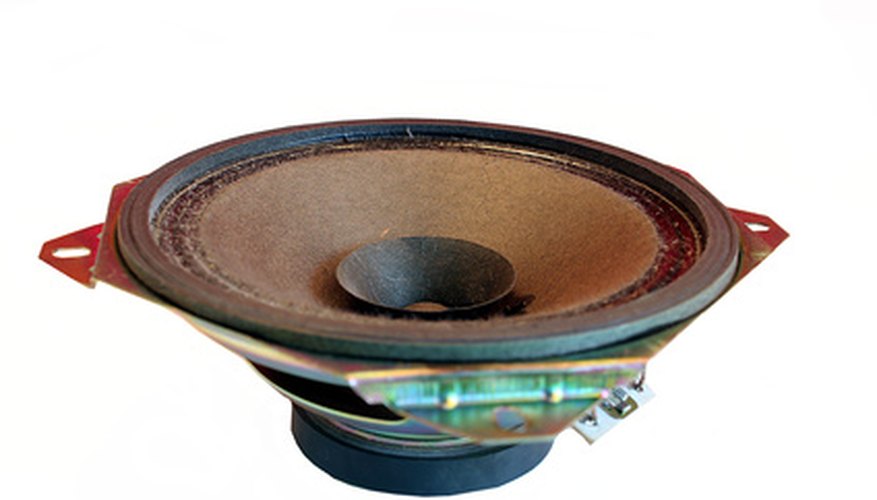Resonator cones are the main sound source in resonator guitars. Resonator guitars are different to traditional acoustic guitars. The majority of sound amplification occurs inside the metal cone, which is fixed inside the instrument. The sound is projected outwards from a small focal point rather than via a wooden board, as is the case with traditional acoustic guitars. This method of amplification gives resonator guitars a characteristically bright and loud sound. Resonator cones can become dislodged from their fixings, dented or cracked.
Troubleshoot the guitar. It's good to know exactly what the problem is before attempting your repairs. Pick the guitar up or move it. If you hear a rattling sound, the cone may have come loose. If the guitar's overall sound is dull and quiet, the cause is likely a slipped resonator cone. The cone may have moved and is touching another part of the guitar. This prevents it from fully resonating. If the guitar is loud and clear, but the tone is poor, the cone may be dented or split.
- Resonator cones are the main sound source in resonator guitars.
- If the guitar is loud and clear, but the tone is poor, the cone may be dented or split.
Remove the strings. Use a string-winder to do this job quickly. You cannot remove the resonator with the strings in place.
Lay the guitar on its back and unscrew the resonator cone. The rear of the resonator cone is screwed in at the front of the guitar. Typically there will be a series of screws around the circumference of the cone that attach it to the body of the guitar.
- Use a string-winder to do this job quickly.
- Lay the guitar on its back and unscrew the resonator cone.
Gently lift the cone out of the guitar and inspect it. If there is a dent in the metal, gently tap it out with a small ball pin hammer. Do this by tapping on the convex part of the ding so that it flattens. If there is a crack in the cone, there is little you can do to reverse the effects. However, you can stop a small crack from getting worse by drilling a small hole at each end of the crack. If your resonator cone is badly cracked, replace it.
Ensure that the groove hasn't become worn. Typically there will be a groove in the sound well into which the point of the cone slides. The sound well is a wooden circular fixing that resembles a drum. A worn groove can cause the cone to slip around inside the sound well, causing it to rattle. If it has become worn and is now too large, fill it with spackling paste. Use a small chisel to carve a new groove once dry.
Replace the resonator cone. The cone sits in the sound well. Whether you will need to screw the cone into the sound well depends on the style and model of the cone.
- Ensure that the groove hasn't become worn.
- The cone sits in the sound well.
TIP
Be extremely careful when tapping dings out of the cone. Too heavy a tap can cause more damage.
WARNING
A cracked resonator cone may have extremely sharp edges. Be careful when handling.
